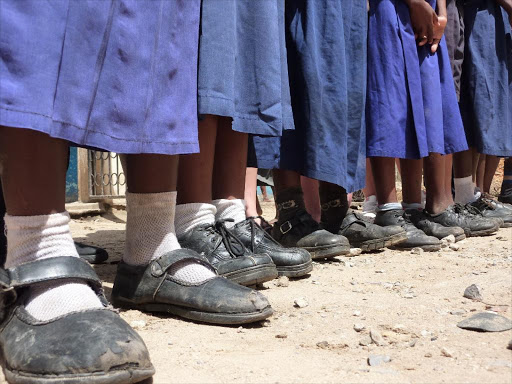
During the KCPE and KCSE exams, many adolescent girls are compelled to sit exams from their hospital beds as they recuperate after childbirth. These cases reflect an underlying problem of teen pregnancies, many of which go unreported or unnoticed.
The latest statistics from the Global Childhood Report 2019 by Save the Children indicate that Kenya has the third-highest rate of teen pregnancies in East Africa. Tanzania and Uganda lead the pack with 117 and 111 births per 1,000 girls respectively, ahead of Kenya with 82 births per 1,000 girls.
Furthermore, 12 per cent of girls aged 15-19 years were married off between 2013 and 2018. Within the Eastern African region, South Sudan had the highest rate of such marriages at 40 per cent.
Another report by the UN Population Fund reveals that approximately 378,397 adolescent girls became pregnant between July 2016 and June 2017. According to the report – titled The People’s Choice – most of the adolescent girls (approximately 349,465) were aged 15-19 years.
The rest of the teen mothers – an estimated 28,932 – were aged 10-14 years. The counties with the largest number of teen mothers were Narok (40 per cent), Homa Bay (33 per cent), West Pokot (29 per cent) and Tana River (28 per cent). The lowest rate of teen pregnancies during this period was recorded in Embu (8 per cent), Nyeri (7 per cent) and Murang’a (6 per cent).
The 2014 Kenya Demographic Household Survey found that the median age for first-time childbirth has largely remained unchanged since 2008 at 20.3 years old. Nonetheless, 15 per cent of girls aged 15-19 years were teen mothers, whereas another 3 per cent were pregnant with their first children at the time of the survey.
The KDH survey also found that girls with higher education levels are likely to delay childbirth on an average of three years later than those with lower education levels. This is the same case for girls from high-income families or socioeconomic backgrounds in comparison to their low-income compatriots.
Similarly, the survey identifies Narok, West Pokot, Tana River, Samburu, Nyamira and Homa Bay as leading counties in teen pregnancies compared to others, such as Nyeri, Elgeyo Marakwet, Embu and Murang’a.
RISK FACTORS
Various studies have also identified the risk factors of adolescent pregnancy in Kenya. One such research by Shiateya Nicholas in 2016 identifies early sexual debut, drug and alcohol abuse, peer pressure and high illiteracy levels as risk factors of early pregnancy in coastal counties.
Likewise, another study in 2016 by the Faith to Action Network identifies poor parenting/broken marriages, poverty, lack of sex education and cultural practices as the root causes of teen pregnancies in Kilifi County.
Titled Teenage Pregnancy in Kenya’s Kilifi County, the study unearths several hotspots of teen pregnancy in the county including Ganze, Mtwapa, Malindi town and Magarini sub-county.
In Western Kenya, a 2017 study by a group of researchers from Kenya Medical Research Institute, Centers for Disease Prevention and Liverpool School of Tropical Medicine reveals that low education levels, negative peer pressure and lack of access to contraceptives increase the risk of teen pregnancy in the region.
Surprisingly, the research – Teen Pregnancy in Rural Western Kenya: A Public Health Issue – reveals that teens with more than one sexual partner are less susceptible to unwanted pregnancy compared to those with one partner.
The findings of the study contradict those of an earlier one in the same region, which identified a link between increased contraceptive use and heightened risk of teen pregnancy.
The study by Mary Were – Determinants of Teenage Pregnancies: The Case of Busia District in Kenya – also pinpoints lack of parental guidance, lack of education opportunities and widespread poverty as risk factors of teen pregnancies insofar as the county is concerned.
In light of these risk factors, the African Institute for Development and Policy proposes that stakeholders should intensify sex education iniatives.
“Increase access to comprehensive sexuality education and sexual and reproductive health services for adolescents,” Afidep says in a 2014 policy brief.
Afidep also calls for increased implementation of poverty alleviation initiatives.
However, such initiatives have to incorporate teen girls as major stakeholders to develop subsequent strategies that are tailored to their needs and concern.
Edited by T Jalio

 © The Star 2024. All rights reserved
© The Star 2024. All rights reserved